Educational Articles
-
It is estimated that over 80% of dogs over the age of three have periodontal disease (infection of the tissues surrounding the teeth). Brushing three times a week is the minimum recommendation to help remove plaque and prevent tartar accumulation. To be successful at brushing your dog's teeth, you must make it a positive experience for both of you. Do not use human toothpaste or baking soda. A list of dental products and diets that have been accepted by the Veterinary Oral Health Counsel can be found on www.vohc.org.
-
In veterinary dentistry, tooth repair or restoration that fully covers the tooth is called a crown. Crowns are used after root canal therapy or when enamel is not present due to wear or congenital disease. This article discusses how crowns are made and used in veterinary care. Under normal wear, and with special care, the crown should last for your dog's lifetime.
-
Plaque and tartar forms on teeth daily and, if allowed to accumulate, will cause progressive periodontal disease. Cleaning your dog's teeth every day at home helps prevent plaque and tartar build-up. For proper dental evaluation and care, your dog must be safely placed under general anesthesia. The examination usually includes dental X-rays and probing to evaluate gum bleeding and periodontal pockets. Tooth scaling will be performed, using both hand and ultrasonic scalers, to remove tartar above and below the gum line. Removing plaque and tartar before disease occurs is the foundation of preventative dentistry.
-
Dental disease, also known as periodontal disease, is a condition in which the tissues supporting the teeth become inflamed. When a pet develops dental disease, significant quantities of bacteria reside within the mouth and the oral tissues. These bacteria can enter the bloodstream and travel to other areas such as the liver and kidneys, causing distant or systemic effects.
-
Dental disease is one of the most common medical conditions seen by veterinarians. The most common dental problems seen in dogs are periodontal disease and fractured teeth. This article discusses the most common dental diseases in cats, signs, diagnostic procedures, treatments, and preventive steps to keep a dog's teeth healthy.
-
Dental pain may take on a variety of appearances, but often, a dog will not show any outward signs of pain. The only effective treatment for dental pain is to address the dog's underlying dental disease. The best way to prevent dental pain is to ensure that your dog receives regular dental care through a home dental care plan and regular veterinary dental care.
-
If a tooth is unerupted, it is at risk of forming a destructive dentigerous (odontogenic) cyst in the bone. Although unerupted or broken teeth can be painful, dogs rarely show obvious signs of pain. Dentigerous cysts, including and the original tooth must be removed carefully as to avoid compromising the bone, which can easily fracture during the extraction. Dentigerous cysts are preventable if unerupted teeth are addressed early in life.
-
When a tooth is broken with the pulp exposed, there are only two choices for treatment: root canal therapy or extraction. Root canal therapy involves removing the pulp from the center of an injured tooth, sterilizing the canal, and replacing the removed pulp with dental materials; this prevents bacteria from penetrating the center of the tooth. Root canal therapy is less invasive than extraction but requires advanced training and specialized equipment.
-
Dogs often break their teeth from chewing on bones, antlers, and hard chew toys. There are five classifications of tooth fractures and each needs treatment to avoid tooth sensitivity and pain. Clinical signs include chewing on one side of the mouth, excessive drooling, dropping food while eating, pawing at the mouth, and facial swelling. Your veterinarian may perform a root canal or extract the tooth. Eliminating hard chew toys and treats can prevent tooth fractures.
-
Gingival hyperplasia is the abnormal growth of excessive gum tissue. The gums may appear reddened or inflamed and may become so enlarged that it is difficult to visualize the teeth. In some cases, gingival hyperplasia may be localized to specific areas and its appearance may mimic the appearance of a mass or tumor. Gingival hyperplasia is most commonly treated with the surgical removal of the excessive proliferative tissue, referred to as gingivoplasty. Although it results in a significant improvement in clinical signs, gingivoplasty does not typically cure the condition.






